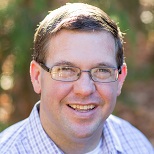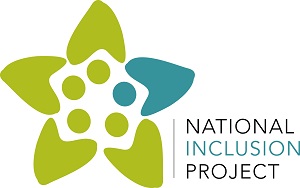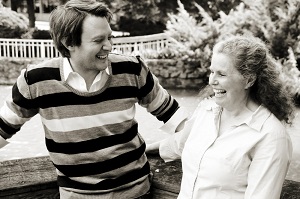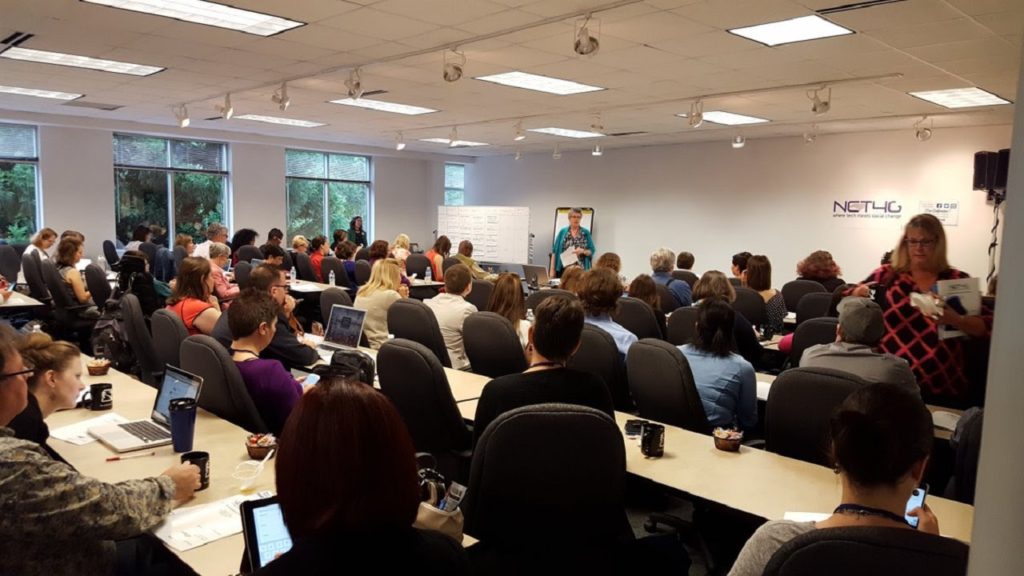 Special to the Philanthropy Journal
Special to the Philanthropy Journal
By Aron Hall
In 2003, the National Inclusion Project (NIP) was established out of the relationship between Clay Aiken, Diane Bubel, and Diane’s then 13-year-old son Mike, who had been diagnosed with autism. The bond between them grew strong as they shared a vision of a world where children like Mike could be fully immersed in society. They had both witnessed children with disabilities repeatedly turned away from activities opened to typical children.
 As Clay pursued a degree in special education from UNC-Charlotte, he completed an independent study project where he created a foundation that focused on providing the support system for recreational and educational programs around the country to open doors to children with disabilities that had thus far remained closed. Both Diane and Clay realized that an organized effort could encourage and facilitate community inclusion and empowerment of individuals with disabilities.
As Clay pursued a degree in special education from UNC-Charlotte, he completed an independent study project where he created a foundation that focused on providing the support system for recreational and educational programs around the country to open doors to children with disabilities that had thus far remained closed. Both Diane and Clay realized that an organized effort could encourage and facilitate community inclusion and empowerment of individuals with disabilities.
At the onset, the NIP board and staff took parallel paths in their approach to community impact. In addition to financially supporting organizations who already had their own inclusion programs, we also invested time and financial resources into developing our own model for inclusion, with the idea that it could be duplicated and spread throughout recreational programs around the country. That model developed to what is now known as Let’s ALL Play (LAP).
The open enrollment period for potential grantees as well as ongoing program development for LAP soon became too unruly for our small nonprofit startup. Grant review, evaluations of grant partners, and in depth program development all suffered in thoroughness and quality. A grant timeline and clearly defined priorities begin to take shape and, once established, allowed the NIP to feel like we had more control over the process.
In 2008, after 4 years of hands-on work with 4 YMCA summer camps around the country, we awarded our first batch of LAP grants. While we felt confident that we had developed solid principles and basic methodology for running an inclusive recreational program, there was still a sense that the grant money was the main motivational drive that would bring quality programs into the fold. Early in the development of LAP, someone in leadership at a program we were proposing to work with expressed doubt that the model would ultimately be successful. If it were not for the financial investment in that program, the door would never have opened for development there. Perhaps it was that early sentiment that still resonated as we launched the LAP expansion.
A thorough evaluation of LAP by the Center of Social Development and Education at UMass-Boston proved the program’s validity and gave our board and staff the confidence that there was certainly more to the model than just a few principles and a big check. As a result, we revisited our entire grant process and made several adjustments.
First, in an effort to reflect more clearly our priority of building relationships with community partners, we adjusted the language for LAP from a grant program to a partnership program. On our website, the directive for the inquiry process is “Become a Partner”, not “Apply for a Grant.” As the NIP had grown, we had realized that many organizations had been doing inclusion and doing it well for years. However, very few of those organizations were connected with each other or had the means to spread their learnings to others to accelerate the inclusion learning curve. The NIP realized that adopting the role of “connector” would provide real value to many community programs. Stressing partnerships over grants made that role clearer to organizations approaching us for support.
Secondly, the maximum amount of funding for programs was reduced from $20,000 to $10,000 over a two-year period. A three-year funding cycle was established with each year bringing less funding to encourage programs to establish plans for sustainability from the onset of the relationship versus at the end of the funding cycle. We saw no dip in inquiries as a result of this change. However, because of the reduced stress on the amount and increased focus on training and networking, the quality of partnerships increased dramatically.
Lastly, while still open to other models, we have streamlined our focus to investing in organizations that want to implement the LAP program model. As a result, the messaging to supporters, constituents, and all others has become clearer and more easily defined. The focus has also allowed for more clear boundaries around what types of programs we will and will not work with.
We have worked tirelessly for 13 years to ensure that recreational and social inclusion becomes the expectation, and not simply the exception, and as we move into an exciting future, these early lessons will inform each avenue we pursue. The most important being that the path forward must be walked together, as a community, ensuring that every child has the chance to make a friend.
Aron Hall is Director of Programs for the National Inclusion Project, and coordinates the Let’s ALL Play partnership programs and trainings. The National Inclusion Project was co-founded in 2003 by entertainer Clay Aiken and serves to bridge the gap that exists between young people with disabilities and the world around them.






